Foods and Drinks That Can Cause High Triglycerides
Be mindful of your intake of high-calorie foods if you are trying to lower your triglyceride levels. As some high-calorie foods are nutrient-rich, like nuts and avocados, consider checking in with your doctor for additional guidance.
Foods High in Triglycerides
While it is important to check on your cholesterol levels and blood pressure, keeping an eye on your triglycerides is highly advisable. Increased triglycerides fat levels in your blood can be a potential risk for heart complications. To avoid this, check on your lifestyle and your diet too. Most of your body fats are stored as triglycerides. Ideally, your body stores excess sugar or calories as the fat in these triglycerides form. Therefore, don’t eat foods high in triglycerides to avoid high triglycerides.
Facts About Triglycerides
Triglycerides are lipids present in your blood. After eating foods high in triglycerides, your body converts excess calories into triglycerides that are then stored in the fat cells in your body. In between meals, hormones release these triglycerides for energy. High levels of triglycerides cause hypertriglyceridemia.
With a simple blood test, your triglyceride level can be determined as follows:
The optimal triglyceride level recommended by the American Heart Association (AHA) is 100 mg/dL or 1.1 mmol/L. A lower value than this is even better for enhancing the health of your heart. All the same, there are no recommendations by AHA to offer drug treatment in order to attain this level. However, those desiring this level should make changes in lifestyle through diet, physical activity and weight loss since triglycerides respond well to them. In a cholesterol test, your doctor can check for triglyceride levels by asking you to fast between 9 and 12 hours before taking a blood sample from your body.
Foods to Avoid If You Have High Triglycerides
When you notice high triglycerides levels, watch your diet since foods high in triglycerides may make the condition worse. This may pave way for attack to your body, especially with heart related complications.
The older you get, the more you will be forced to spend on healthcare. A couple retiring at age 65 in 2018 will spend $280,000, on average, on medical costs throughout their retirement, not counting the expense of over-the-counter medications or the cost of living in a nursing home, CBS News
1. Avoid Starchy Foods
Starchy vegetables: Vegetables are generally good. However, some are starchy like mashed potatoes, beans, yams, peas and corn and thus should control their consumption. This way, your body will not have to convert excess starch into these triglycerides. Instead, eat kale, mushrooms and cauliflower.
Refined starch: Foods from refined flours also fall in the category of foods high in triglycerides. White bread made from refined floor does not have fiber needed to lower triglyceride levels in blood. Therefore, you should avoid foods made out of bleached, enriched and refined flours like pasta, bread, rice and crackers.
2. Reduce Saturated and Trans-Fats Intake
These are commonly found in pizza and animal foods. AHA recommends between 30-35% calories for your body and of these, saturated fats should not exceed 7%. Therefore, avoid or control eating chocolate, cheese, butter, pastries, poultry skin and fatty meats.
Trans-fats are in part hydrogenated oils used to make foods have more savory texture and taste and more non-perishable. Foods high in triglycerides lying in this category include fried foods like doughnuts, French fries, cookies, crackers and prepackaged baked foods like pie crusts and pizza.
Tropical oils such as coconut oil and palm oil (unlike most plant oils) are essentially high in saturated fats more than butter. Other oils like cottonseed oil are not recommended for consumption although they have for years been applied in processed foods. Essentially, avoid foods with solid fat at room temperature.
3. Limit Sugars and Sugary Beverages
It is evident that foods high in triglycerides are pleasant to eat. Sugars and sugary beverages too have a negative health impact. Added sugar sugars on food have fructose that could increase the amount of triglycerides and fats in your liver. Therefore, you should avoid adding sugar to what you eat. Don’t drink sugary beverages like sports drinks, sweat tea, alcohol and soda. The excess sugar is converted into fats and lipids hence increasing the level of triglycerides in your blood.
Foods to Lower Triglycerides
If you have high triglycerides levels, apart from avoiding foods high in triglycerides, there’re also some foods that can help to lower your levels, which include:
1. Include More Omega–3 Foods in Your Diet
Some fats are healthy and therefore, omega-3 fats can be used when you need to cut down the quantity of saturated and trans-fats from your food. These omega-3 fats are highly recommended for a healthy heart and particularly effective at lowering the levels of triglycerides. You can eat about two omega-3 fish servings like wild salmon, mackerel (although not king), herring, rainbow trout, sardines or maybe oysters every week. Additionally, let your doctor advise you on the habit of including fish oil supplements as part of your diet.
2. Go For Soy Protein
Soy protein is highly recommended for you if you realize that you have high levels of triglycerides. Soy protein lowers the level of triglycerides in your blood more than protein obtained from animal foods. A study published in 2004 in the Atherosclerosis Journal by Canadian researchers amongst 50 year old persons with high blood triglycerides responded positively after taking 25 grams quantity of soy protein for each 1,000 calories consumed.
3. Enjoy the Benefits of Nuts
The consumption of nuts is connected to a decreased cardiovascular risk. In the same thought, researchers have in their studies found out that blood lipids can be reduced by consuming nuts. A total of 25 trials were conducted in seven countries in a study with 583 participants of both gender having high and normal cholesterol and published in May 2010 in Archives of Internal Medicine. It was found out that eating about 67 grams of nuts on average on a day-to-day basis lowered triglycerides by about 10% in people who had high levels of triglycerides.
Foods and Drinks That Can Cause High Triglycerides
Elizabeth Woolley is a patient advocate and writer who was diagnosed with type 2 diabetes.
Yasmine S. Ali, MD, MSCI, is a board-certified preventive cardiologist and lipidologist. Dr. Ali is also an award-winning writer.
Table of Contents
Table of Contents
Most of the time, high triglycerides are caused by a poor diet. Other factors can play a role, however, such as genetics or even the medication you’re taking.
Triglycerides can contribute to several health issues and concerns. High levels of triglycerides can play a role in heart disease, stroke, and the complications of diabetes.
Fortunately, exercise and good nutrition can help lower your triglycerides. That includes avoiding foods such as sugary drinks and snacks, foods high in saturated fat, and refined grains like white bread and pasta. You should also limit your intake of alcohol, manage diabetes, and quit smoking.
This article gives an overview of triglycerides and their effects on health. It also offers examples of foods that are good and bad for triglyceride levels.
What Are Triglycerides?
Triglycerides are a type of lipid, otherwise known as a fat. These fats move through the blood and are either used as energy or stored. If they are stored, hormones can trigger their release if they are needed for energy later.
Cholesterol is also a lipid, but it has a different function. Cholesterol is a waxy substance that your body uses to build cells.
What Foods and Drinks Cause High Triglycerides?
Sugary food and drinks, saturated fats, refined grains, alcohol, and high-calorie foods can all lead to high levels of triglycerides. If you have high triglycerides, avoiding these food categories can help bring your levels down.
Sugar
Simple sugars, like fructose, are a common source of elevated triglycerides. Eating too much sugar may lead to weight gain and insulin resistance.
Insulin resistance is when your body can’t use the hormone insulin effectively to turn sugar into energy. It can cause blood sugars to increase and is a risk factor for type 2 diabetes.
Sugary drinks and foods that can lead to high levels of triglycerides include:
- Fresh and canned fruit
- Candy
- Ice cream and sweetened yogurt
- Sweetened drinks like juices
- Cereal
- Jams and jellies
- Milkshakes and smoothies
- Foods and drinks with corn syrup, honey, sucrose, glucose, fructose, and maltose listed as the first ingredient
Fruit can be a healthy food choice, as it contains vitamins, minerals, fiber, and water. However, if you have high triglycerides, you may want to limit your daily fruit intake. Ask your healthcare provider or dietitian if you have questions about which fruit choices are best.
Saturated and Trans Fats
Saturated fats can raise triglyceride levels. They can be found in fried foods, red meat, chicken skin, egg yolks, high-fat dairy, butter, lard, shortening, margarine, and fast food. Alternatives include:
- Lean proteins such as skinless white chicken meat and fish
- Low-fat dairy
- Egg whites
- Legumes
- Olive oil, canola oil, and peanut oil
Trans fats are hydrogenated fats that can be found in some packaged and fried foods. Trans fats have been banned, with exceptions, from the food supply in the U.S.
Refined Grains and Starchy Foods
Refined or processed grains are typically made from white flour, which can increase triglycerides. They also often have added sugars. If possible, try to limit:
- Enriched or bleached white bread, wheat bread, or pasta
- Sugary cereals
- Instant rice
- Bagels
- Pizza
- Pastries, pies, cookies, and cakes
Starchy foods can also raise triglycerides. Try to choose foods with 100% whole grains and opt for long-grain rice instead of instant rice. If possible, eat non-starchy vegetables such as spinach, instead of starchy ones like potatoes.
Alcohol
Alcohol consumption can raise triglyceride levels. Decreasing your alcohol intake can help lower these levels. If you or a loved one need additional help decreasing alcohol consumption, reach out to your doctor.
High-Calorie Foods
Be mindful of your intake of high-calorie foods if you are trying to lower your triglyceride levels. As some high-calorie foods are nutrient-rich, like nuts and avocados, consider checking in with your doctor for additional guidance.
What Causes Triglycerides to Go Up Quickly?
Triglycerides can go up quickly:
- When you eat too much food
- When you eat high-fat foods
- When you eat foods high in simple carbohydrates
Triglycerides go up if there is extra energy that isn’t immediately used. This extra energy is stored as body fat.
Foods That Can Lower Triglycerides
Some studies suggest that essential fatty acids, such as omega-3 fatty acids, can help lower triglyceride levels.
This type of fat is found in:
- Salmon
- Sardines
- Mackerel
- Tuna
- Walnuts
- Flax seeds
- Canola oil
Fish oil or omega-3 supplements may be a helpful addition to your diet. However, before taking supplements, you should speak with your healthcare provider.
Also make sure to eat plenty of vegetables, which help lower triglycerides in part because they don’t contain a lot of calories, sugars, or bad fats. Certain vegetables like Brussels sprouts, broccoli, and spinach contain an antioxidant called alpha-lipoic acid that may lower triglycerides.
Also, choose foods made with soy, which is a healthy source of protein. Some research suggests that regular soy protein consumption can lower triglycerides.
Adding foods rich in omega-3 fatty acids to your diet may help lower triglyceride levels. If possible, aim to eat wild-caught fatty fish at least twice a week. You should also try to get three to five servings of veggies daily, particularly non-starchy ones.
Other Causes of High Triglycerides
High triglyceride levels may have other causes besides diet. For some people, high triglycerides are genetic. While dietary changes may help lower them a bit, you may also want to speak with your doctor about whether you also need to take medication.
Pregnancy can also cause a temporary increase in triglycerides. In women who are genetically predisposed, the increase can sometimes be severe and life-threatening.
Some medications can also raise your triglyceride levels. These include:
- Birth control pills containing estrogen
- Hormone replacement therapy
- Corticosteroids
- Soltamox (tamoxifen)
Summary
High triglyceride levels can lead to health concerns. Foods and beverages high in triglycerides include sugary foods and drinks, alcohol, starchy foods, foods with saturated fats, high-calorie foods, and refined grains.
Diet and exercise can help lower triglyceride levels. Foods that may help decrease triglyceride levels include fatty fish, green veggies, flax seeds, canola oil, and soy-based products.
Consider speaking with your doctor if you would like additional help lowering your triglyceride levels, or if you are thinking about taking an omega-3 or fish oil supplement.
Frequently Asked Questions
How can you lower triglycerides with supplements?
Your healthcare provider may suggest taking omega-3 fatty acids DHA and EPA. Another option may be a prescription form of niacin, a B vitamin, which can help lower triglycerides and raise HDL levels. Always check with your healthcare provider before using a supplement.
How long does it take to lower triglycerides naturally?
It varies, but it may take a few months with diet and exercise changes. Research has found that a weight loss of 5% to 10% can lower triglycerides by 20%.
10 Sources
Verywell Health uses only high-quality sources, including peer-reviewed studies, to support the facts within our articles. Read our editorial process to learn more about how we fact-check and keep our content accurate, reliable, and trustworthy.
- American Heart Association. HDL (good), LDL (bad) cholesterol and triglycerides.
- Jacobsen A, Savji N, Blumenthal RS, et al. Hypertriglyceridemia management according to the 2018 AHA/ACC Guideline.
- Chiavaroli L, de Souza RJ, Ha V, et al. Effect of fructose on established lipid targets: A systematic review and meta-analysis of controlled feeding trials. J Am Heart Assoc. 2015;4(9):e001700. doi:10.1161/JAHA.114.001700
- Cleveland Clinic. Triglycerides & heart health.
- Shearer GC, Savinova OV, Harris WS. Fish oil—how does it reduce plasma triglycerides? Biochim Biophys Acta. 2012;1821(5):843–851. doi:10.1016/j.bbalip.2011.10.011
- American Heart Association. Triglycerides: frequently asked questions.
- Moradi M, Daneshzad E, Azadbakht L. The effects of isolated soy protein, isolated soy isoflavones and soy protein containing isoflavones on serum lipids in postmenopausal women: A systematic review and meta-analysis. Crit Rev Food Sci Nutr. 2020;60(20):3414-3428. doi:10.1080/10408398.2019.1689097
- Wong B, Ooi TC, Keely E. Severe gestational hypertriglyceridemia: a practical approach for clinicians. Obstet Med. 2015;8(4):158-67. doi:10.1177/1753495X15594082
- Kim DS, O’Hayer PJ, Rubenfire M, Brook RD. Hypertriglyceridaemia‐induced pancreatitis prompted by acute corticosteroid treatment: caution for clinicians. Intern Med J. 2019;49:411–412. doi:10.1111/imj.14228
- Sahebkar A, Serban MC, Penson P, et al. The effects of tamoxifen on plasma lipoprotein (a) concentrations: systematic review and meta-analysis. Drugs. 2017;77(11):1187-97. doi:10.1007/s40265-017-0767-4
By Elizabeth Woolley
Elizabeth Woolley is a patient advocate and writer who was diagnosed with type 2 diabetes.
Share Feedback
Was this page helpful?
Thanks for your feedback!
What is your feedback?
Other Helpful Report an Error
Related Articles
Comparing Krill Oil vs. Fish Oil Benefits
What to Eat When You Have Endometriosis
10 Causes of High Triglycerides in Diabetes
Causes and Risk Factors of High Triglycerides
What Are Lipids?
The Ultimate Diabetes Shopping List
The Best and Worst Foods for Ankylosing Spondylitis
Lovaza (Omega-3-acid Ethyl Esters) – Oral
Managing High Cholesterol When You Have Diabetes
Benefits of Fish Oil for Heart Disease Prevention
The Link Between Triglycerides and Heart Health
What to Eat and What to Avoid With Type 2 Diabetes
What Are Unsaturated Fats?
Polyunsaturated Fat vs. Monounsaturated Fat: What’s the Difference?
High Cholesterol Diet: What to Eat and Avoid
8 Sneaky Foods That Increase the Risk of Diabetes
- Meet Our Medical Expert Board
- About Us
- Editorial Process
- Diversity Pledge
- Privacy Policy
- In the News
- Advertise
- Terms of Use
- Careers
- Contact
- EU Privacy
Verywell Fit
Verywell Mind
Verywell Family
Verywell Health’s content is for informational and educational purposes only. Our website is not intended to be a substitute for professional medical advice, diagnosis, or treatment.
Ⓒ 2023 Dotdash Media, Inc. — All rights reserved
When you visit the site, Dotdash Meredith and its partners may store or retrieve information on your browser, mostly in the form of cookies. Cookies collect information about your preferences and your devices and are used to make the site work as you expect it to, to understand how you interact with the site, and to show s that are targeted to your interests. You can find out more about our use, change your default settings, and withdraw your consent at any time with effect for the future by visiting Cookies Settings, which can also be found in the footer of the site.

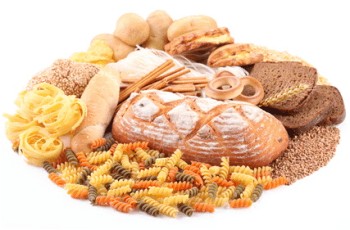
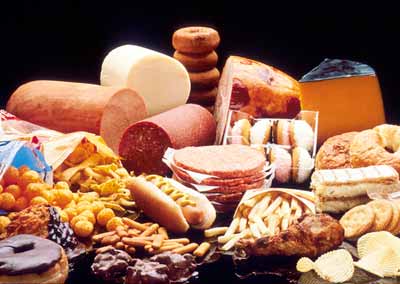
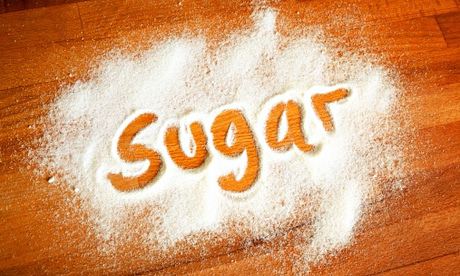
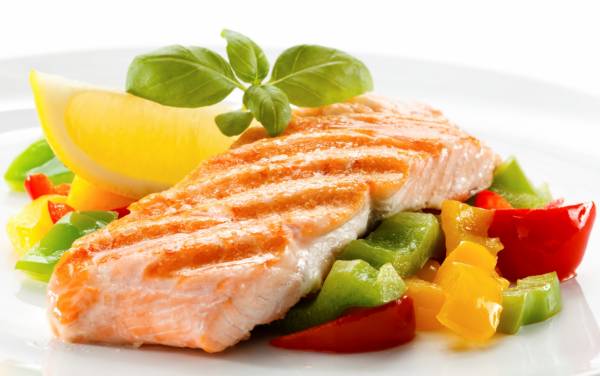
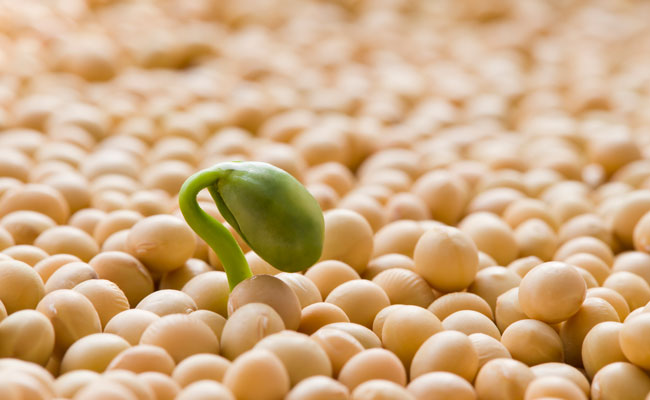
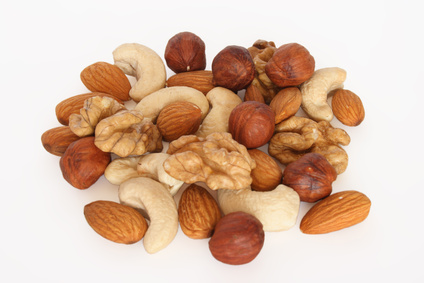
:max_bytes(150000):strip_icc()/WhatFoodsCauseTriglycerides_1087467_Final_1-09231c5b733443428b820171db570827.jpg)
:max_bytes(150000):strip_icc()/GettyImages-1430921498-6d2236c5123447648509c245d2a65361.jpg)
:max_bytes(150000):strip_icc()/GettyImages-941131444-a1f6c56f3b694b368d9641e8a849f01c.jpg)
:max_bytes(150000):strip_icc()/GettyImages-142451512-5707c4435f9b581408d96284.jpg)
:max_bytes(150000):strip_icc()/GettyImages-476804053-5a68c8476edd650037e382ab.jpg)
:max_bytes(150000):strip_icc()/GettyImages-6850226371-4220020acc4a420a96106ec3161ab9ac.jpg)
:max_bytes(150000):strip_icc()/521813443-56a24fee3df78cf772744ce0.jpg)
:max_bytes(150000):strip_icc()/GettyImages-1291102974-410fc2737e5345058b761b45832dea43.jpg)
:max_bytes(150000):strip_icc()/recirc_Oral-pill-87028e0a0929416fae0f5edcabf0130d.jpg)
:max_bytes(150000):strip_icc()/Planked-Salmon-5791105a5f9b58cdf3c6ad09.jpg)
:max_bytes(150000):strip_icc()/GettyImages-1276388018-ec83c456411c472980b9e765fd397aae.jpg)
:max_bytes(150000):strip_icc()/109439707-56a470543df78cf7728269ce.jpg)
:max_bytes(150000):strip_icc()/GettyImages-184837952-b93bb69e5e1e470ba7ddc9a5ddf4a17a.jpg)
:max_bytes(150000):strip_icc()/olives1-56b7fc3d3df78c0b13648cbf.png)
:max_bytes(150000):strip_icc()/oils-5747c3f03df78ccee1a20595.jpg)
:max_bytes(150000):strip_icc()/GettyImages-594833459-571a70d05f9b58857dd7edb6.jpg)
:max_bytes(150000):strip_icc()/GettyImages-1002765400-ce361110c0224ab9b45604ed9fc9d14c.jpg)


